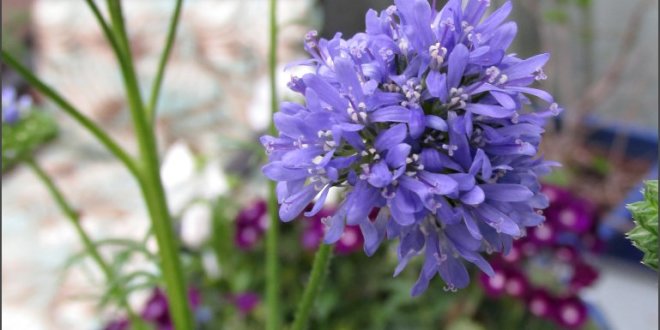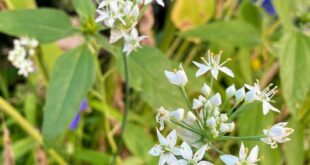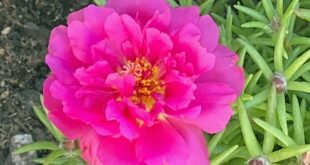The Gilia genus contains mostly desert-loving plants, native to the area stretching from the western United States to South America. Spanish botanists Hipólito Ruiz and José Antonio Pavón found the first known Gilia species on their expedition to South America, later detailing it among other species in a 1794 publication of their research from Peru and Chile. They gave this family of flowers the name Gilia in honor of Filippo Luigi Gilii (1756-1821), an Italian naturalist whom they greatly admired for his research in South American native plant life at the Vatican Observatory.
Globe Gilia Germination: Direct sow in late fall, planting just below the surface. For spring planting, mix the seed with moist sand and store it in the refrigerator for 30 days; direct sow. To start indoors, sow seeds in a flat or individual peat pots 6-8 weeks before the last frost; keep the soil lightly moist and at a temperature of 70 degrees F until germination, which usually occurs within two weeks. When the weather has warmed and the seedlings are well established, transplant outdoors.This plant adapts well to areas with rocky or sandy soil.
Growing Globe Gilia Seeds: Keep the soil moist as the seedlings develop, which will happen rather slowly at first. Mature plants tolerate drought well, preferring hot and dry conditions; do not overwater, since this can cause disease. This plant will self-sow, and is extremely attractive to butterflies and bees.
Harvesting Globe Gilia: For fresh flowers, cut long stems of flowers that have just opened and place them in water immediately; strip the leaves that will fall below the water.
Saving Globe Gilia Seeds: After blooming, the globe-shaped flowers will become dry and light brown. Each tiny flower becomes a capsule that opens to reveal several brown seeds; cut the ripened heads or simply shake the entire plant over a container to remove the seeds. Store the cleaned seed in a cool, dry place.
Details
Genus: Gilia (JIL-ee-uh) (Info)
Species: capitata (kap-ih-TAY-tuh) (Info)
Category: Annuals
Height: 18-24 in. (45-60 cm)
Spacing: 6-9 in. (15-22 cm)
Hardiness:
USDA Zone 7a: to -17.7 °C (0 °F)
USDA Zone 7b: to -14.9 °C (5 °F)
USDA Zone 8a: to -12.2 °C (10 °F)
USDA Zone 8b: to -9.4 °C (15 °F)
USDA Zone 9a: to -6.6 °C (20 °F)
USDA Zone 9b: to -3.8 °C (25 °F)
USDA Zone 10a: to -1.1 °C (30 °F)
USDA Zone 10b: to 1.7 °C (35 °F)
Sun Exposure: Full Sun
Danger: N/A
Bloom Color: Violet/Lavender
Bloom Time: Late Spring/Early Summer, Mid Summer
Foliage: Smooth-Textured
Other details: Average Water Needs; Water regularly; do not overwater
Soil pH requirements:
6.1 to 6.5 (mildly acidic)
6.6 to 7.5 (neutral)
7.6 to 7.8 (mildly alkaline)
Patent Information: Non-patented
Propagation Methods: From seed; sow indoors before last frost; From seed; direct sow after last frost
Seed Collecting: Allow seedheads to dry on plants; remove and collect seeds
Read more: http://davesgarden.com/guides/pf/go/53225/#ixzz3Gp4a3ljV








